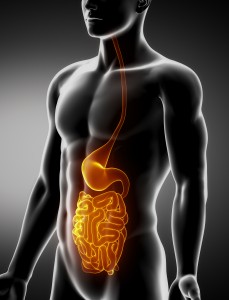
Increase in blood amino acid levels after ingestion of hydrolyzed salmon protein in healthy young men.
Absorption study
The increase in plasma levels of amino acids (aminoacidemia) after ingestion of protein containing meals stimulates several important biological systems and is therefore an indicator of protein quality with regard to effect s on health and bodily function. The aminoacidemia is a product of the dose of protein ingested, the amino acid content, the digestibility and the absorption rate of amino acids and short peptides. AMIZATE® is a protein product based on natural enzymatic digestion of salmon protein resulting in complete digestion into free amino acids and short peptides. Consequently, AMIZATE® has the properties to be rapidly digested and absorbed; resulting in a rapid aminoacidemia. The aim of this study was to characterize the aminoacidemia after ingestion of two doses of AMIZATE® and to compare against the aminoacidemia after ingestion of equal amounts of whey protein and hydrolyzed casein protein.
The study had a randomized double‐blinded cross‐over design. All subjects met in the lab on four different test days and ingested one of the four protein drinks at each visit in a randomized order. The protein drinks investigated were hydrolyzed salmon protein (AMIZATE® Nature), whey protein concentrate (WPC‐80) and a pre‐digested casein product (processed casein). All products were given as 20 g protein doses. In addition all subjects ingested a lower dose of AMIZATE® Nature (6 g product, corresponding to 4.5 g protein). A total of 10 young and healthy males completed the study. At each test day the subjects met in the lab in the morning between 07:30 and 09:00 h after an overnight fast. The first blood sample was collected just before ingestion of the protein drink, and thereafter blood samples were collected at 20, 30, 45, 60 and 90 min in order to follow the blood response for glucose, insulin and amino acids.
Compared to the processed casein product, similar times to peak blood concentration of branched chained amino acids were observed after ingestion of AMIZATE®, whereas compared to WPC‐80 peak amino acid concentrations were reached approximately 10 min earlier with AMIZATE®. The rapid increase in blood concentrations of amino acids observed after ingestion of all three products resulted in a significant insulin response which reached similar peak concentrations, but peak insulin concentration occurred earlier with AMIZATE® and processed casein than with WPC‐80. The peak concentrations of branched chained amino acids (and most other essential amino acids) were generally lower after ingestion of 20 g protein from AMIZATE® compared to ingestion of 20 g protein from WPC‐80 and processed casein. The reason for these differences was mainly found in the amino acid composition of the three protein sources. As expected, ingestion of the small dose of AMIZATE® (4.5 g protein) resulted in a considerably smaller aminoacidemia. The increase in amino acid concentration after ingestion of the small dose was typically 30‐50% of the increase observed after ingestion of 20 g protein from AMIZATE®.
In conclusion, ingestion of AMIZATE® resulted in a rapid aminoacidemia with peak amino acid blood concentrations reached at similar times as hydrolyzed casein protein and faster than intact whey. The increase in blood concentrations of specific amino acids reflected the content of amino acids in the product ingested. The characterization of the aminoacidemia after ingestion of two doses of AMIZATE® given in this study should provide the documentation necessary to target further research towards the most interesting biological responses.



